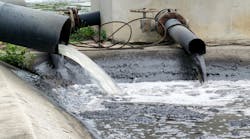In order to better protect the environmental impact on rivers, and other bodies of water, on March 21 the EPA finalized rules regarding the discharge of dangerous chemicals.
The agency notes that climate change can supercharge the risks of dangerous chemical releases. For this reason they are requiring facilities to evaluate those risks and to plan for and respond to such releases. These response plans are a tool to ensure facilities are prepared to respond to a worst-case discharge of hazardous substances. The final rule requires various components to be included in the response plans, including hazard evaluation, personnel roles and responsibilities, response actions, and drills and exercises.
EPA anticipates that approximately 5,400 facilities will meet the criteria to submit a facility response plan.
Additionally, the final rule provides a process for EPA Regional Administrators to assess facilities on a case-by-case basis and, if appropriate, to require a facility to develop a response plan based on, among other things, concerns related to potential impacts of a worst-case discharge on communities with environmental justice concerns.
“As climate change increases the frequency and severity of extreme weather events, planning and preparedness for these incidents are especially important,” said Clifford Villa, EPA Deputy Assistant Administrator for the Office of Land and Emergency Management, in a statement. “These new requirements will help protect the environment and communities by ensuring that facilities have planned for and can respond to worst-case discharges of hazardous substances, particularly in communities with environmental justice concerns, which are disproportionately located in proximity to industrial facilities.”
These protections build on EPA's recent issuance of the "Safer Communities by Chemical Accident Prevention Rule," which contains the strongest ever safety provisions to prevent and address explosions and other accidental airborne releases from chemical facilities.
Section 311(j)(5) of the Clean Water Act directs the President to issue regulations requiring a facility owner or operator of a facility to prepare and submit to the EPA a plan for responding, to the maximum extent practicable, to a worst-case discharge, and to a substantial threat of such a discharge, of oil or a hazardous substance.
In 1994, EPA promulgated regulations for worst-case discharges of oil under 40 CFR part 112, subpart D. Today’s action regulates worst-case discharges of Clean Water Act hazardous substances from onshore, non-transportation-related facilities under section 311(j)(5).
For more information on the final rule, please see EPA’s Clean Water Act Hazardous Substance Facility Response Plans website.
